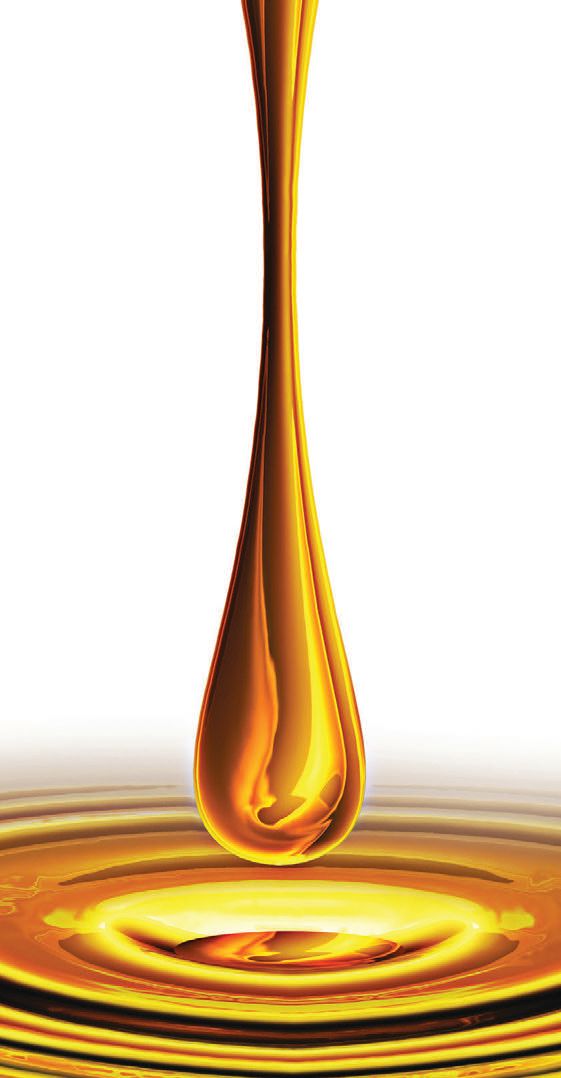Viscosity, viscosity, viscosity!
Evan Zabawski | TLT From the Editor June 2014
OK, then what is the fourth most important property of a lubricant?

Not only does viscosity change with temperature, but the rate at which it changes differs between oils.
www.canstockphoto.com
WHETHER BUYING OR SELLING A HOUSE, we often hear the mantra “location, location, location!” uttered by the realtor. This axiom regarding the three important aspects of a good property was thought to have been coined by Lord Harold Samuel, a British real estate tycoon. Word etymologists (they exist) have found it was a familiar aphorism in Chicago as early as 1926 but still haven’t located its original source.
What should prove to be an even harder challenge is identifying the first occurrence of someone using the same form of repetition to describe the three most important properties of a lubricant: viscosity, viscosity, viscosity! It would seem that nearly everyone who gives even the most basic presentation on lubrication fundamentals has employed this mildly amusing phrase. I know I am guilty, but I also qualify the statement to be clear that there are other properties to consider as well.
When teaching I usually provide an example comparing ISO VG 320 oil to ISO VG 220 oil. Before I show the plotted viscosity-temperature relationship, I ask the group, “Which oil is thicker?” Occasionally I will get a student who counters, “At what temperature?” If that happens, I merely state room temperature and let the group agree that the ISO VG 320 is thickest.
Next I will show the viscosity-temperature relationship by graphing the viscosities of two particular choices on ASTM D341 chart paper. From less than room temperature up to 70 C, the ISO VG 320 remains thicker. At 70 C, the viscosities of the two different products converge, and once the lines continue beyond 80 C then the ISO VG 320 oil actually becomes thinner than the ISO VG 220.
I state that this phenomenon is unique to these two products and that it is not necessarily true for all ISO VG 320 oils to be thinner than all ISO VG 220 oils at such temperatures. The point is that not only does viscosity change with temperature, but the rate at which it changes differs between oils.
This variation was certainly noticed in the early days of oil production. Producers quickly realized that naphthenic Gulf Coast and Californian oils had the steepest viscosity- temperature curves, and the flattest (or best) curves belonged to paraffinic Pennsylvania crude.
In 1928, petroleum chemists E.W. Dean and G.H.B. Davis devised a comparative 0-100 viscosity index (VI) scale by using the Saybolt viscosity measurements of two different reference oils at both 100 F (37.8 C) and 212 F (98.89 C). The reference oils, which had the same viscosity at 212 F, were a Coastal crude, assigned a viscosity index of 0, and a Pennsylvania crude, assigned a viscosity index of 100.
Once basestock refining techniques were improved, the ASTM D2270 calculation was devised to account for oils with a VI above 100. With today’s technology, it is rare to find a formulated product with a VI much below 100, and many multigrades are achieving a VI close to 200. In essence, we are now a full scale higher the original scale. Oils also have been formulated to have a VI as low as -400 and the highest theoretical VI, one representing a flat viscosity-temperature curve, is approximately 700—we’re not there yet.
When I try to consider the next, or fourth, most important property when selecting a lubricant, I choose viscosity index. Viscosity varies with temperature, and the VI quantifies that relationship. To emphasize that there are still other considerations, I show a plot of a particular ISO VG 150 compressor fluid against an SAE 90 gear oil and an SAE 40 engine oil. All three have near identical viscosities across a wide temperature range but completely different additive chemistries.
So even if you choose the right viscosity with an appropriate VI, the next consideration would be the additive chemistry. Now that becomes a myriad of fifth, sixth, seventh, etc., properties to consider when choosing a lubricant. It goes to show that selecting lubricants is not always simple.
 Evan Zabawski, CLS, is the senior reliability specialist for Fluid Life in Edmonton, Alberta, Canada. You can reach him at evan.zabawski@fluidlife.com
Evan Zabawski, CLS, is the senior reliability specialist for Fluid Life in Edmonton, Alberta, Canada. You can reach him at evan.zabawski@fluidlife.com.